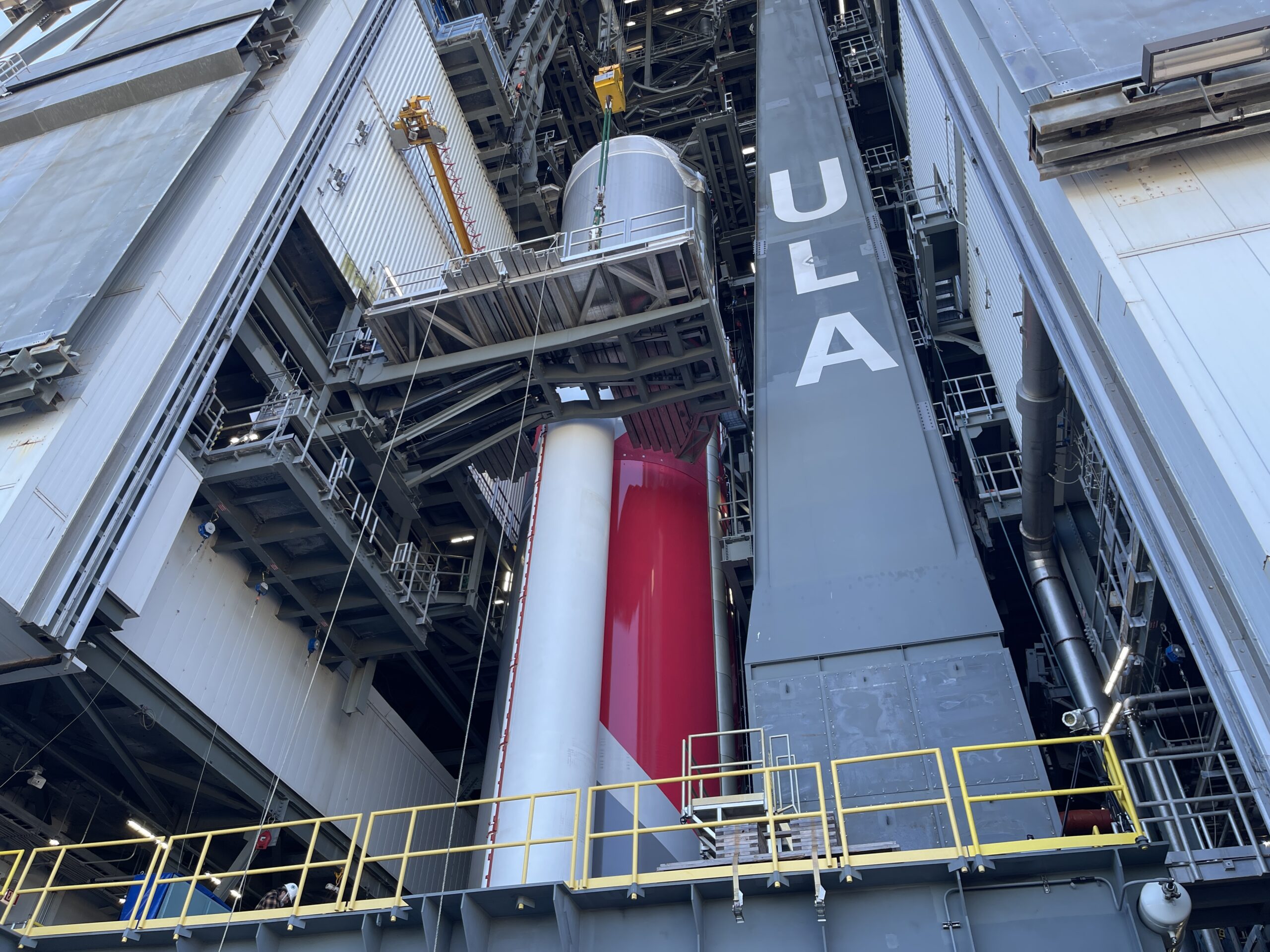
After almost a decade in development, United Launch Alliance (ULA) is drawing ever closer to “Cert-1”, the long-awaited certification mission of its mammoth Vulcan-Centaur heavylifter, currently targeted to fly from Space Launch Complex (SLC)-41 at Cape Canaveral Space Force Station, Fla., no earlier than Christmas Eve. Stacking of the core stage and twin solid-fueled boosters is now complete, with the Centaur V upper stage currently in transit from ULA’s facility in Decatur, Ala., to the Space Coast, for integration, topping-out the behemoth rocket at more than 202 feet (61 meters).
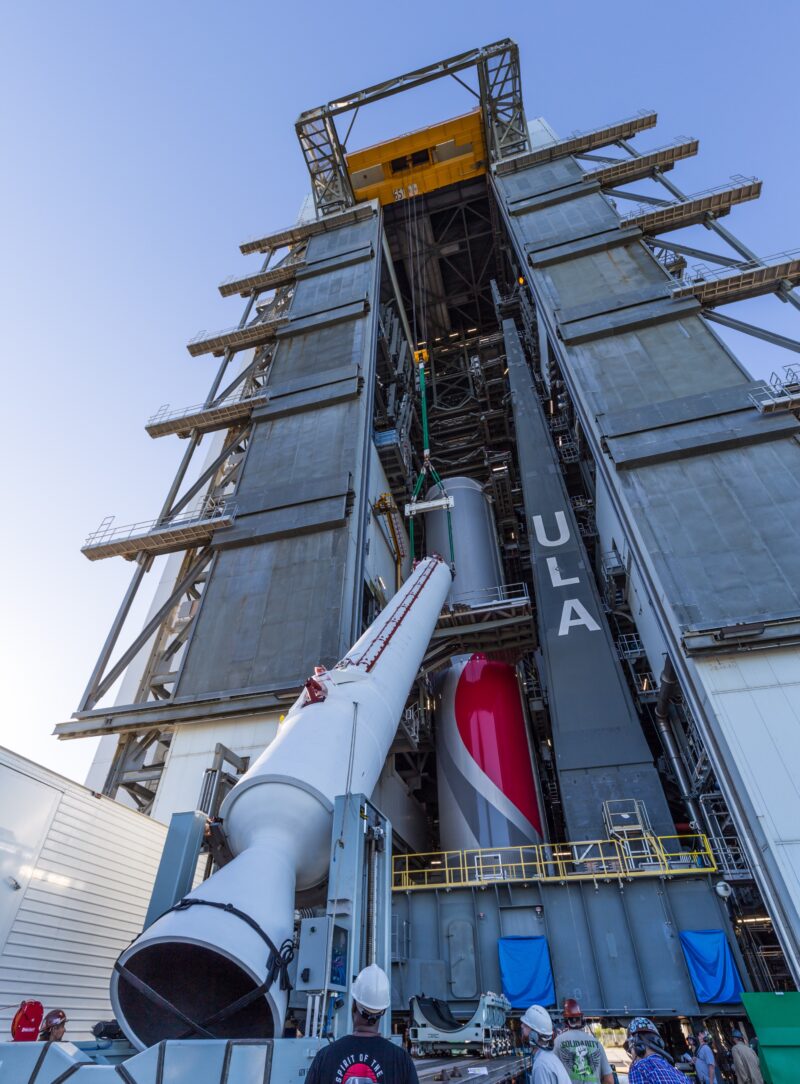
Formalized stacking operations commenced on 26 October, when the core stage—emblazoned in its red and white Vulcan livery—was hoisted vertical and positioned atop the Vulcan Launch Platform (VLP) at SLC-41’s Vertical Integration Facility (VIF). And over a week-long period from 31 October through yesterday, the Northrop Grumman Corp.-built Graphite Epoxy Motor (GEM)-63XL solid-fueled boosters were affixed to the base of the core stage, providing a “business end” of Cert-1 that will punch out a combined 2.1 million pounds (950,000 kilograms) of thrust at T-0.
Vulcan entered the popular consciousness almost a decade ago, when Russia’s annexation of Crimea in March 2014 triggered concerns about ULA purchasing RD-180 engines from Russian manufacturer NPO Energomash to power its workhorse Atlas V rocket. Commercial contracts with “multiple” U.S. firms to investigate home-grown next-generation engine concepts began in June 2014 and by September ULA and Blue Origin had formally agreed to jointly fund the liquid oxygen/liquefied natural gas BE-4 engine, with an expectation that it might support a Next Generation Launch System (NGLS), whose maiden launch was anticipated in 2019.
It was noted from the outset that the BE-4—two of which will power each Vulcan core stage, together punching out 1.1 million pounds (500,000 kilograms) of thrust at T-0—would serve to address “the need for a long-term domestic engine”. Early in the fall of 2015, production of the engine was expanded and by late 2018 Blue Origin’s engine had been selected to power Vulcan’s booster core.
And following a much-publicized national contest which put forward five candidate names for the new rocket—Eagle, Freedom, GalaxyOne, Zeus and Vulcan, proposed by the ULA workforce, and garnering more than a million votes—the winner was selected at the 31st Space Symposium on 13 April 2015, honoring the ancient Roman god of fire.
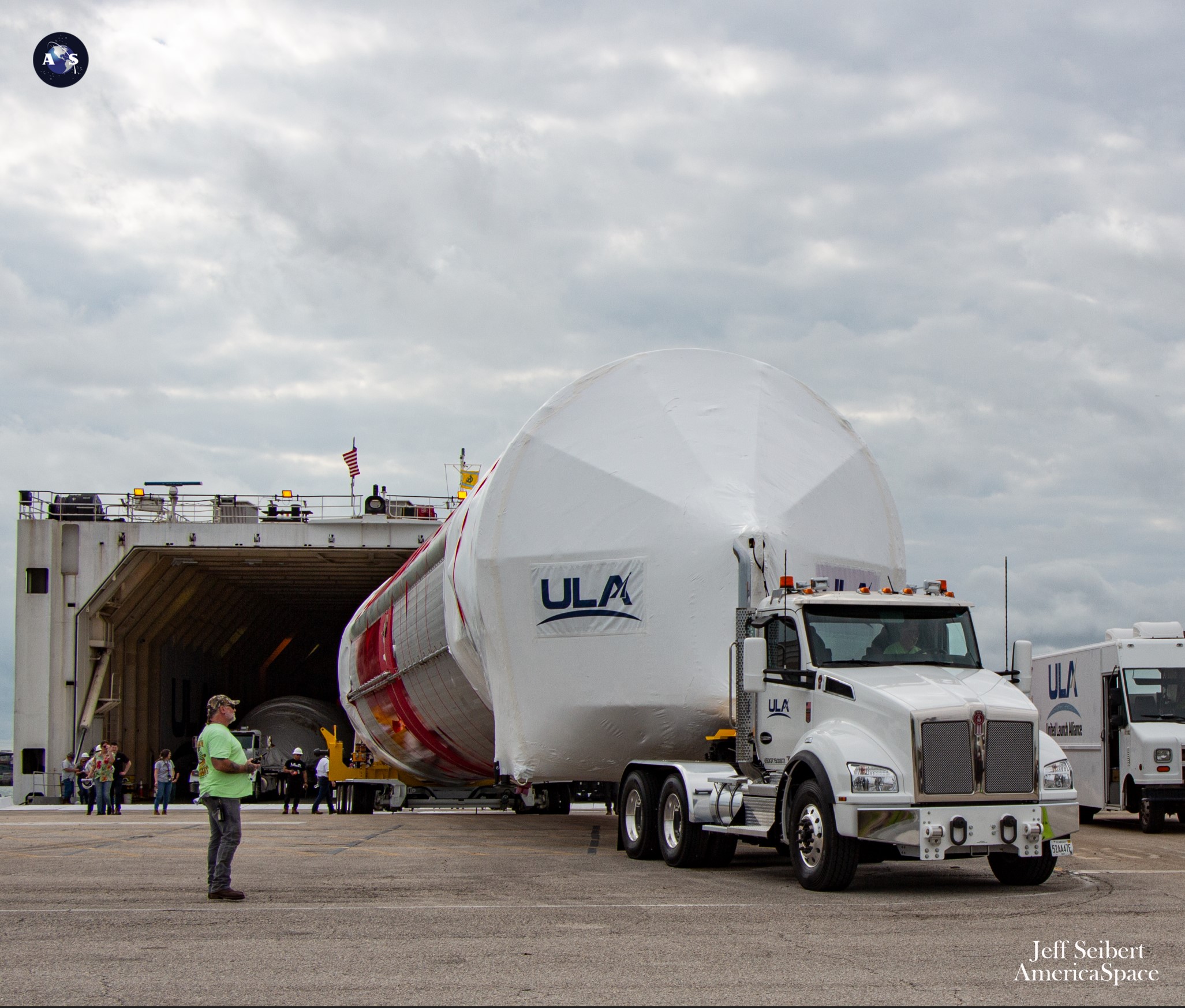
Elsewhere, in July 2015 ULA and RUAG Space—builder of the Atlas V payload fairing components—announced a strategic partnership to establish “a U.S. composites production capability” totaling 132,000 square feet (12,000 square meters) within ULA’s expansive, 1.6-million-square-foot (150,000-square-meter) factory in Decatur, Ala. This enabled RUAG to begin fabricating payload fairings and interstage adapter components for Vulcan.
And in September 2015, ULA formed a second strategic partnership with Orbital ATK (now part of Northrop Grumman) to provide Vulcan’s strap-on GEM-63XL solid-fueled boosters, up to six of which can lift payloads weighing up to 56,000 pounds (25,400 kilograms) into low-Earth orbit, 33,000 pounds (14,970 kilograms) to Geostationary Transfer Orbit (GTO) or 16,000 pounds (7,260 kilograms) directly to geostationary orbit.
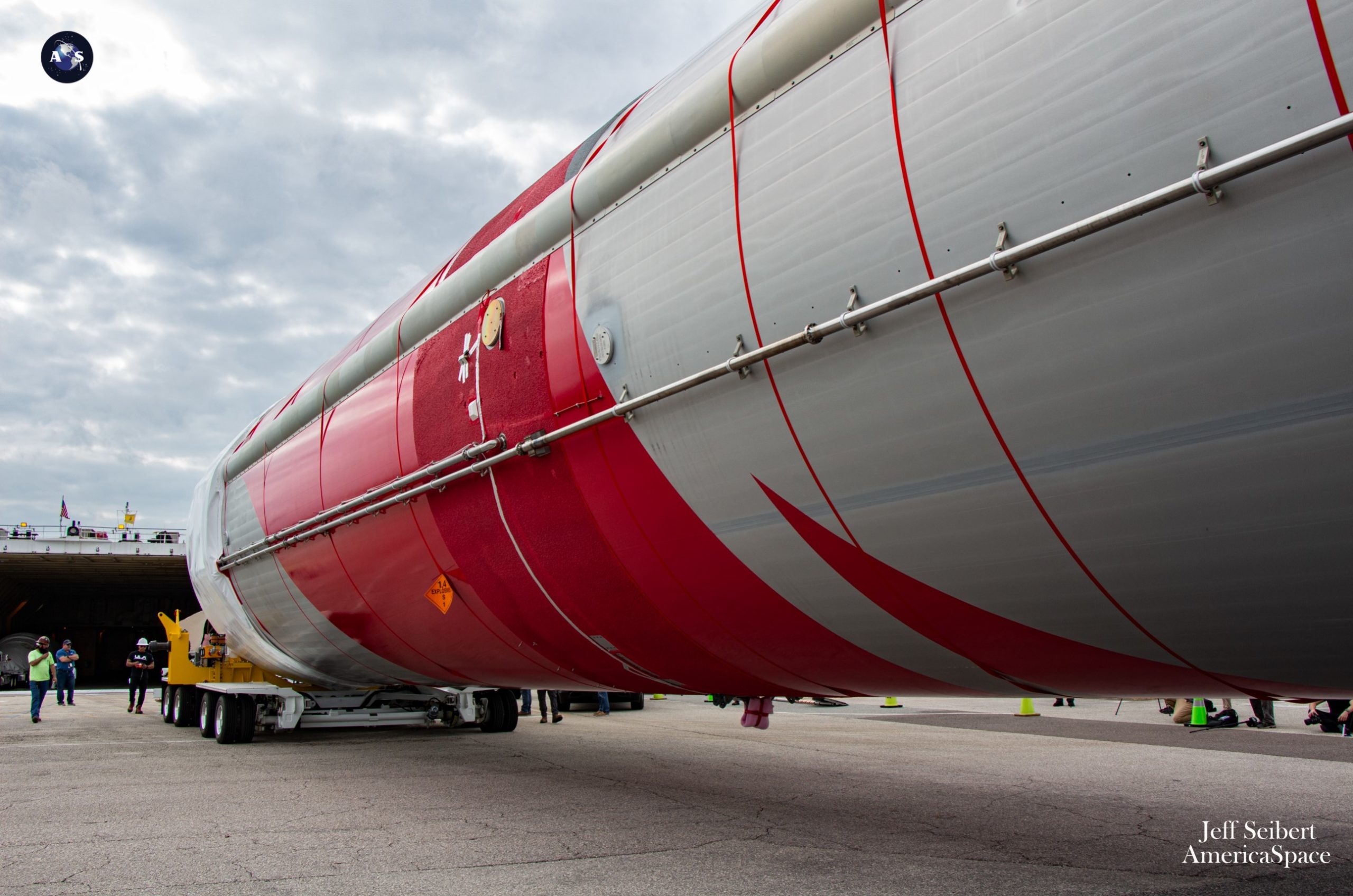
Vulcan smoothly passed through its Preliminary Design Review (PDR) in the early summer of 2016, producing what ULA CEO Tory Bruno called “a strong path” toward a maiden launch as soon as 2019. But a protracted development process caused that target to move inexorably to the right.
By September 2018, the maiden launch had slipped to mid-2020. And with the completion of the system-level Critical Design Review (CDR) in May 2019—as Vulcan transitioned from its design phase into formal qualification—that No Earlier Than (NET) date had shifted yet again, with an expectation that it would take place “in less than two years”, no sooner than the late spring of 2021.
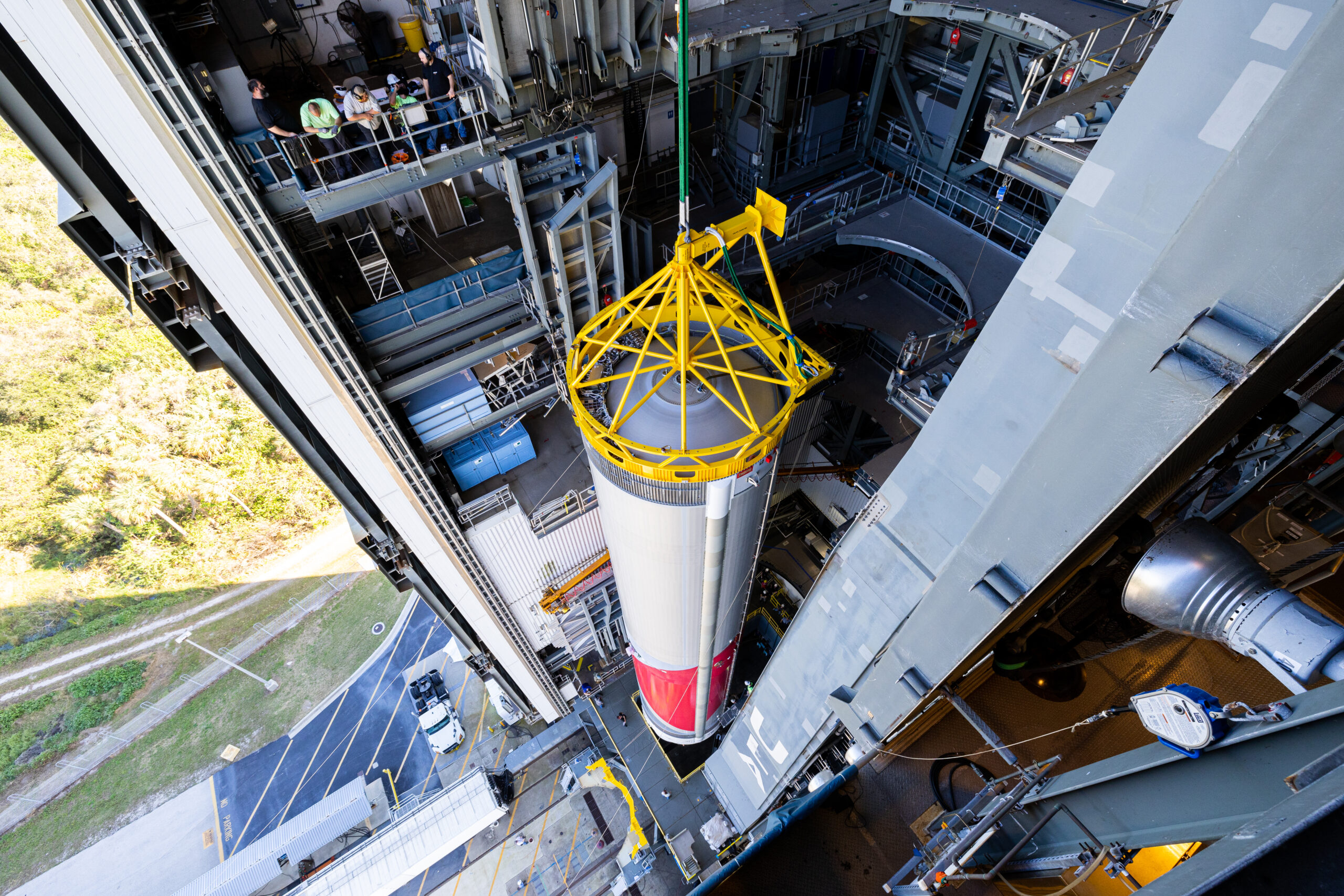
That date continued to slip, settling on the opening half of 2023, before eventually moving into the late fall, thanks to issues pertaining to the Centaur V. Last June, the core stage was put through a successful Flight Readiness Firing (FRF) of the BE-4 engines at SLC-41, allowing progress to ramp up in earnest for perhaps the most eagerly anticipated maiden launch of 2023.
For Cert-1, the Vulcan-Centaur will deliver Astrobotic’s Peregrine lunar lander with 77 pounds (35 kilograms) of customer payloads to the Moon under the auspices of NASA’s Commercial Lunar Payload Services (CLPS) program. When launch contracts for this mission were signed back in July 2017, it was hoped that Peregrine would launch as early as 2019, “during the 50th anniversary of Apollo 11”, but it was not to be, as the development of the Vulcan-Centaur shifted inexorably to the right.
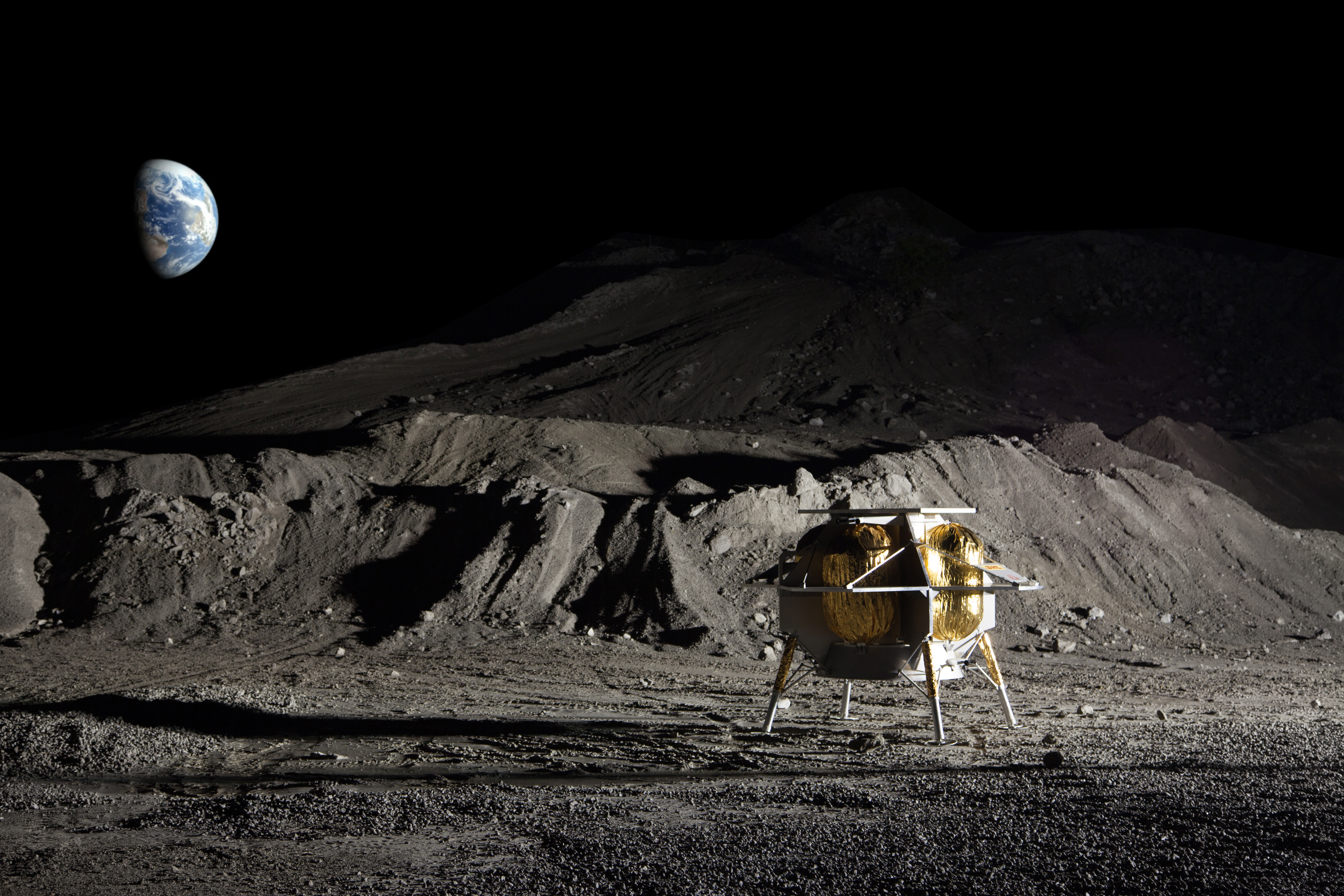
In addition to Peregrine, the Cert-1 mission was originally intended to carry a pair of prototype Project Kuiper global broadband satellites, flying as part of a broader launch contract with Amazon. In April of last year, Amazon selected ULA’s Vulcan-Centaur for 38 launches to deliver a “constellation” of 3,236 Project Kuiper satellites into orbit to make high-speed, low-latency broadband internet provision “more affordable and accessible for unserved and underserved communities”—including households, schools, hospitals, businesses and government agencies—around the world.
However, due to the ongoing delays in bringing Vulcan-Centaur online, Amazon opted to fly its KuiperSat-1 and KuiperSat-2 prototype satellites on an Atlas V instead. That flight took place early last month.
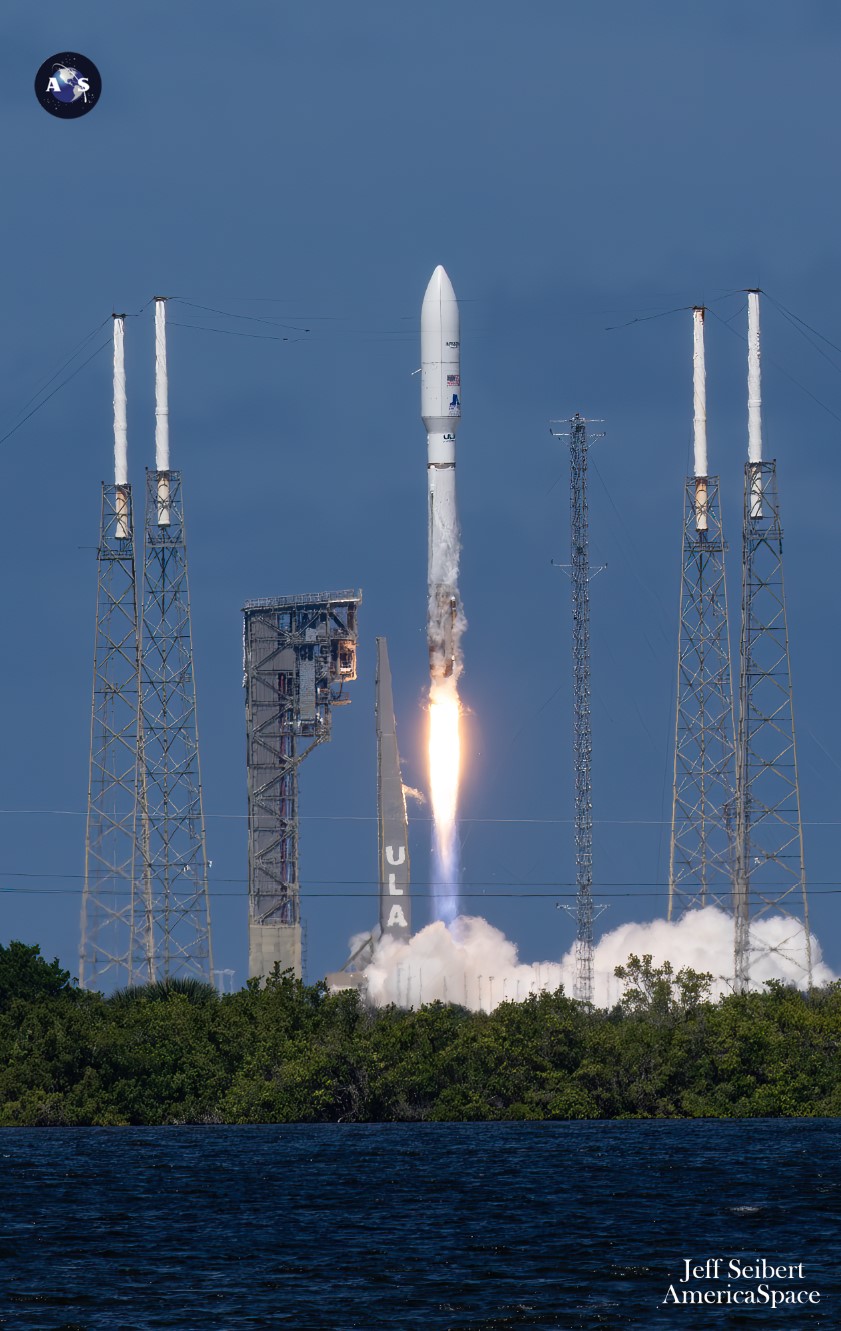
A successful launch of Cert-1 on Christmas Eve will bring to four the total number of missions executed by ULA in 2023, one of its lightest years on record. In addition to last month’s Atlas V launch of the Project Kuiper Protoflight, the second-to-last outing of the mammoth Delta IV Heavy in late June and another Atlas V in the second week of September delivered a pair of highly classified payloads to orbit on behalf of the National Reconnaissance Office (NRO).




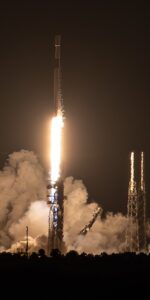

2 Comments
Leave a Reply2 Pings & Trackbacks
Pingback:2024: Year of the Moon - AmericaSpace
Pingback:2024: Year of the Moon - SPACERFIT